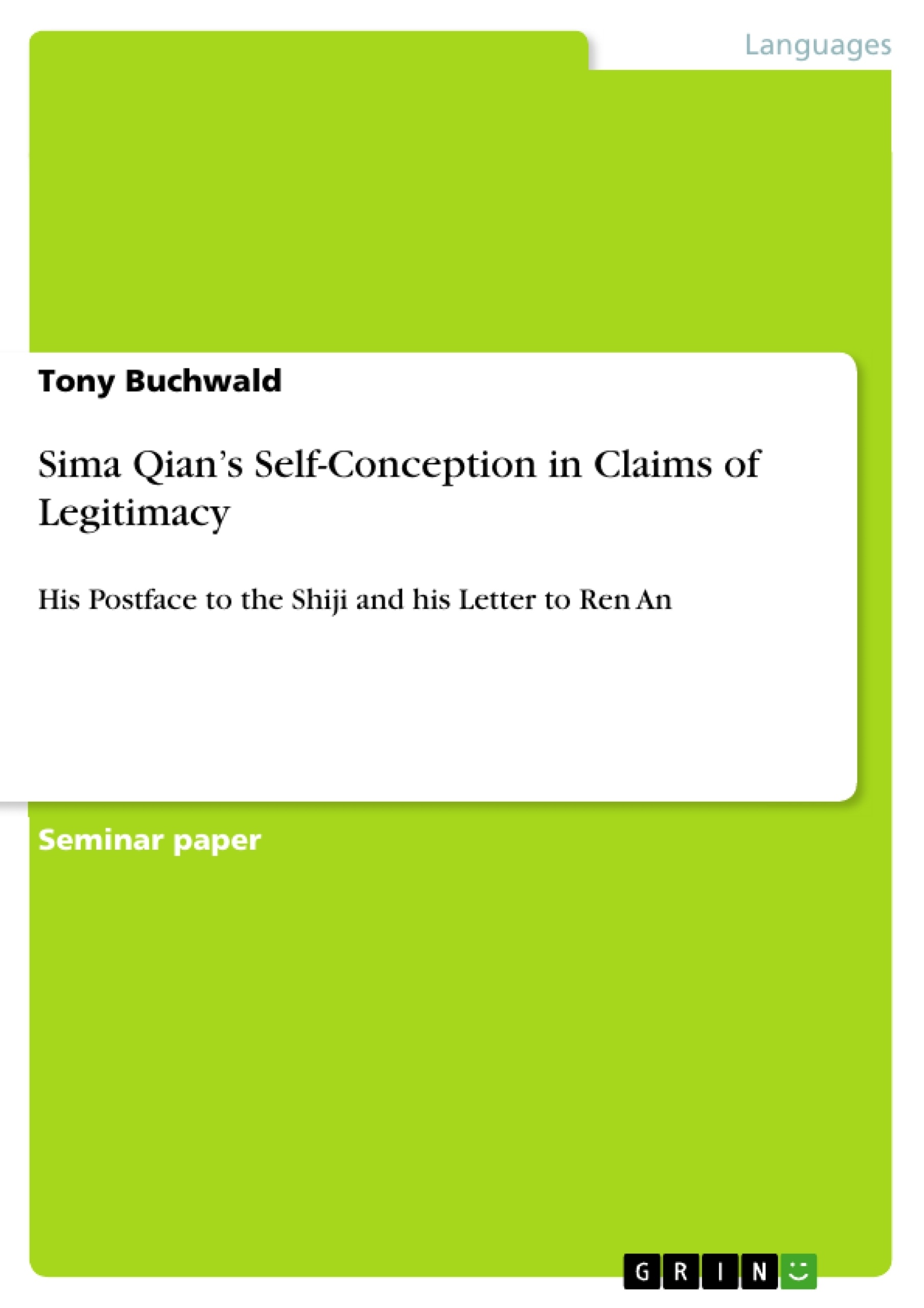What we know today of Sima Qian’s (145 –90 BCE) life and especially of the way he saw himself is drawn mainly from two sources of Chinese historiography – the Records of the Grand Historian or Shiji, written by himself and his father Sima Tan (164 – 110 BCE), and the History of the Former Han or Han Shu, written by Ban Gu (32 – 92 CE) . Chapter 130 of the former, i.e. the author’s postface, provides us with an autobiography of Sima Qian, whereas Ban Gu offers a biography of him in the Han Shu that is mostly copied from the Shiji’s postface. Additionally, after the biography Ban Gu added a letter to Ren An, a friend of Sima Qian’s, which was written as a response to Ren An’s own letter to the Grand Historian. The two mentioned accounts of Sima Qian’s life and his self-conception differ strongly from each other. Whereas his postface serves as a biography both for his father Sima Tan as well as his reasons for writing, or rather completing, the Shiji, his letter offers a great deal of insight into his situation at court and the way he perceived it.
The purpose of this paper is to give some insight into Sima Qian’s self-conception and especially into his ways of legitimising his life and work. Thus, I will argue that the reason for his Confucian agenda of self-legitimation can be found in his self-conception displayed in his letter to Ren An.
Inhaltsverzeichnis (Table of Contents)
- Introduction
- Sima Qian's Postface, Chapter 130 of the Shiji
- Sima Qian's Letter to Ren An
- Conclusion
- Appendix - Daoism in Sima Qian's Writing
Zielsetzung und Themenschwerpunkte (Objectives and Key Themes)
This paper aims to provide insight into Sima Qian's self-conception, particularly his methods for legitimizing his life and work. It argues that his Confucian agenda for self-legitimation stems from his self-conception as revealed in his letter to Ren An.
- Sima Qian's self-conception
- Methods of self-legitimization
- Confucian agenda
- The role of Sima Qian's letter to Ren An
- Sima Qian's relationship with Han Wudi
Zusammenfassung der Kapitel (Chapter Summaries)
The introduction discusses the two main sources of information about Sima Qian's life and self-conception: his own postface to the Shiji and Ban Gu's biography in the Han Shu. It highlights the differences between these two accounts and introduces the paper's objective to analyze Sima Qian's self-legitimation.
Chapter 130 of the Shiji, Sima Qian's postface, is explored in detail. This chapter stands out from the rest of the Shiji by offering a biographical account of both Sima Qian and his father, Sima Tan. The chapter begins with a genealogy of Sima Qian's family, establishing a line of legitimacy for his position as Grand Historian. This serves as a subtle provocation against Han Wudi, who could not trace his lineage back to the legendary rulers Yao and Shun. The chapter also includes a brief biography of Sima Tan, highlighting his staunch support of Daoism and his belief that Daoism combines the strengths of all other philosophical schools.
The chapter continues with Sima Tan's deathbed instructions to his son, revealing Sima Tan's emphasis on filial piety and the importance of making one's name known throughout history. This aspect of Sima Tan's philosophy suggests a strong Confucian influence, even though he is presented as a Daoist in the preceding section.
Schlüsselwörter (Keywords)
The main keywords and focus topics of this work include Sima Qian's self-conception, his methods of self-legitimation, Confucianism, Daoism, the Shiji, Han Wudi, and the relationship between Sima Qian and his father, Sima Tan.
- Quote paper
- Tony Buchwald (Author), 2012, Sima Qian’s Self-Conception in Claims of Legitimacy, Munich, GRIN Verlag, https://www.hausarbeiten.de/document/274524


